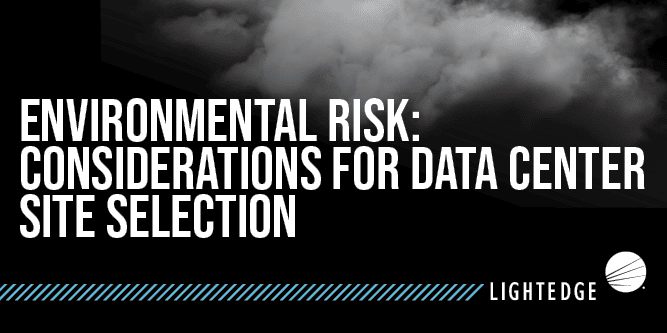Level Up: Understanding Data Center Tiers
December 3, 2020

Lightedge
Author

If you’ve ever shopped around for a data center provider, you have probably heard your sales rep, CSO or other facilities expert talk Tiers; Tier 1, 2, 3, or 4 Ratings to be specific. (Often displayed in Roman Numerals I, II, III, and IV.) Data center Tiers are a standardized framework for data center providers to adhere to when it comes to the redundancy of their power and infrastructure, and a critical element when it comes to selecting a home for your IT environment.
The ratings can sometimes be confusing to decipher, especially when it comes to landing on which Tier your organization actually requires in order to meet your unique compliance and uptime standards. That’s why we’re breaking them down for you here in one easy-to-consume post. Keep reading to learn more about the different Tier classifications and the level your organization fits within!
How Are Data Center Tiers Classified?
The Uptime Institute’s data center classification system is the widely recognized system to determine where each facility falls on a spectrum of business functions and criteria for maintenance, power, cooling, and fault capabilities. It’s important to note that the Tiers are progressive, so each Tier also includes the requirements and features of lower Tiers. This does not mean that any Tier is better or worse than the others. It simply means that each Tier is designed to serve different types of organizations based on their unique needs.
When looking at various data center Tiers, you’ll frequently hear the word “topology.” Topology refers to the physical infrastructure of the data center facility. This includes things like physical security, heating and cooling, and anything else that creates a safe physical environment for the units that store your organization’s data. By mitigating the vast majority of physical risks, each data center Tier provides users with peace of mind, knowing that their mission critical infrastructure is protected, no matter what comes their way.
One of the other essential components of data center Tier classification is operational sustainability. This encompasses the risks and behaviors that determine the data center’s ability to meet an organization’s long-term business goals. Keep in mind that this component exists separately from the infrastructure design. The owners of the data centers often align their management style to a Tier to get closer to their goals and objectives, since management behavior has a direct impact on operational sustainability.
Each data center Tier outlines a combination of topology and operational sustainability necessary to obtain each Tier. Like we said earlier, the Tiers are progressive, meaning Tier IV also includes the criteria from Tiers I through III.
Which Tier is Right for You?
It can definitely be helpful to know the basics of each data center Tier so you can make an informed decision about where you store your mission-critical data. Here’s a brief overview of each Tier and what it can mean for the businesses that utilize them, so you can feel prepared before making that choice.
Tier I Data Center
A Tier I facility is the economy package. It covers the basic capacity and infrastructure for an office setting and beyond. The trademarks of a Tier I data center are:
- An uninterruptible power supply (UPS) for power sags, outages, and spikes
- An area for IT systems
- Dedicated cooling equipment that runs outside office hours
- An engine generator in the event of power outages
Tier I data centers have controls to protect against service disruptions due to human error, but not to protect against unexpected failures or outages. Redundant equipment includes chillers, pumps, UPS modules, and engine generators. Tier I facilities will have to shut down completely for preventative maintenance and repairs, and failure to do so increases the risk of unplanned disruptions and severe consequences from system failure. Additionally, this data center Tier boasts 99.671% guaranteed reliability, or 29 hours of downtime per year, given that it is a single-patch model. Routine maintenance can often be scheduled outside of peak business hours, but sometimes, that is not the case– and as we know, disaster can strike at any time.
This data center option is often the choice for small businesses who don’t want anything too fancy but still need to have their basic needs covered. Because there isn’t much built-in redundancy, it’s not the best option for organizations who need 24/7/365 availability since there will be downtime for routine maintenance and a slight increase in probability of other disruptions.
Tier II Data Center
Tier II facilities encompass all the components of Tier I data centers and also cover redundant capacity components for power and cooling, which ensure improved maintenance opportunities and safety against less predictable disruptions. Given the redundancy, Tier II data centers experience slightly higher uptime than a Tier I data center guarantees 99.741% reliability, with downtime under 22 hours per year. While they might still only have a single path for cooling and power backup, like Tier I, they do come with a few more bells and whistles. The additional components of a Tier II facility include:
- Engine generators
- Energy storage
- Chillers
- Cooling units
- UPS modules
- Pumps
- Heat rejection equipment
- Fuel tanks
- Fuel cells
The slightly different distribution path of Tier II serves an organization’s critical environment, and the components can be removed or altered without a disruption of service. However, much like a Tier I data center, an unexpected shutdown of a Tier II data center will still affect the system operations.
Given a boost in reliability, Tier II data centers are a solid option for companies who need a little more than the bare minimum in terms of service and uptime. These redundant capacities give organizations a bit more peace of mind at a price point that’s still accessible for many small-to-mid-sized companies.
Tier III Data Center
One of the most interesting differentiators between a Tier II and a Tier III data center is the exponential difference in uptime. A Tier III data center can have no more than 1.6 hours of downtime per year, which equates to 99.982% guaranteed reliability. This is possible because a Tier III data center is concurrently maintainable with redundancy as a key differentiator, complete with redundant paths to serve the critical infrastructure. These redundancies build upon the existing redundancies of a Tier II data center but also ensure that Tier III facilities don’t require shutdowns for routine maintenance or replacement. Any part of a Tier III data center can be shut down with no impact to IT operations, making for extremely limited disruptions to staff and customers.
Redundancies in a Tier III data center are much more sophisticated than antecedent Tiers and include:
- Multiple power disruption paths
- Multiple cooling disruption paths
- Increased number of power backup sources
- Specific procedures allowing for maintenance and repairs without disruption of service
- Power outage protection
Tier III data centers are the most commonly demanded rating by larger, regulated organizations due to the sophisticated redundancies and subsequent uptime increases from Tiers I and II. These companies tend to require next to no downtime and ultimate reliability in any scenario, which can easily be accomplished within their budget at a Tier III facility. Most organizations only need to go up to a Tier III data center to adequately meet (or even surpass) their security and reliability needs.
Tier IV Data Center
A Tier IV data center has the most robust security protocol and redundancies built into the model. Each Tier IV facility has several independent and physically isolated systems that more than double down on redundancy and distribution paths. This means that any disruptive event will not compromise all systems, resulting in outages. The environment will avoid disruption due to both planned maintenance and unplanned issues, but if there are singular paths out of service for maintenance, there will be a slightly higher risk of disruption if a failure should occur.
The biggest addition to a Tier IV data center is fault tolerance, on top of an already robust Tier III topology. If a piece of equipment were to fail or a distribution path were to be interrupted, IT operations won’t be affected. All of the IT equipment is required to have a fault tolerant power design in order to be considered a Tier IV data center.
Additionally, Tier IV data centers must have the following elements to achieve this classification:
- Continuous cooling to achieve the highest standard of environmental stability
- 96-hour power outage protection
Given this fully-redundant model of infrastructure, Tier IV data centers experience less than a half an hour of downtime per year, making it the most reliable option but one that can come with a hefty price tag. A Tier IV data center is considered an enterprise-class data center. Tier IV data centers are not necessary for the vast majority of businesses, and are typically only utilized by government entities and a small subset of extremely regulated others. Most companies don’t benefit from the seemingly negligible increases in reliability and security in the jump from a Tier III to a Tier IV data center facility.
Still Not Sure What You Need?
After looking at the variations, the language around data center Tiers can often sound all Greek but selecting the right data center Tier for your organization’s needs can be much simpler than you think, as long as you are transparently communicating with your prospective providers throughout the whole process. If you have concerns, it is best to have an expert address them directly. They will help you prioritize features and understand the value of all the bells and whistles so you can make an educated decision.
Ready to Level Up? Look No Further than Lightedge
Finding a colocation provider that meets the security, compliance, availability, and scalability demands your organization requires can seem like an impossible task. Thankfully, Lightedge is a top performer in each of those areas with our enterprise-class facilities built to Tier III standards, leading compliance as a service, and always-on uptime.
As a top-tier colocation services provider, we deliver the highest levels of availability and reliability through secure, certified data centers, and dedicated onsite team members that operate 24/7/365. We offer customizable and scalable services that put you in control, whether you’re in need of a colocation rack, cage, or custom suite-with the capacity to rapidly scale up or down as your needs evolve.
We offer customers a vast range of colocation and disaster recovery solutions across our geographically dispersed facilities on multiple US power grids, so your network is always on and so are we. We also pride ourselves on expert support services 24 hours a day, 7 days a week, no exceptions. Our technical support starts with direct access to technicians in Lightedge’s Network Operations Center (NOC) via a toll-free number for emergencies. The Lightedge Portal allows you to open tickets, track progress and more for all of your services, no matter the hour.
Customers turn to Lightedge to reduce risk of non-compliance, scale security solutions, and for our proven reliability and impact on your bottom line. Lightedge customers are supported by an extended team of experienced engineers, so they can focus on strategic initiatives internally. Are you curious about how your current provider stacks up? Our security experts will provide a free security assessment to see how you measure up against the latest compliance and security standards. No risk, no commitment, just a taste of what a partnership with us could look like for your organization. Contact us today to get your free security assessment.


